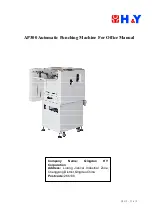
Collision Cart
Model No. ME-9454
2
®
Note: Experiments
using the Collision Cart
are described in the
Experiment Guide for the
ME-9458 and ME-9435
Dynamics Track
Accessory Sets.
Introduction
The PASCO Model ME-9454 Collision Cart is designed specifically
for collision experiments in conjunction with any of the PASCO
Dynamics Cart and Dynamics Track systems. It differs from the ME-
9430 Classic Plunger Cart in two ways:
1.
The Collision Cart has no spring plunger.
2.
The Collision Cart has magnets and Velcro
®
pads installed on both
ends of the cart.
Like the Plunger Cart, the Collision Cart has a mass of approximately
500 g and holes in each end-cap for attaching string or springs. An
additional mass of approximately 500 g is included with the cart and
fits into the mass tray on top of the cart.
Advantages of the Collision Cart
• The cart comes supplied with Velcro
®
pads attached, so a Collision
Cart will stick to a Plunger Cart during an inelastic collision. (Note:
The end of the ME-9430 Plunger Cart used in the inelastic collision
must not have magnets attached, or the two carts will not stick
together due to the repulsive properties of the magnet assemblies.)
• The Collision Cart has magnets attached, so the cart will bounce off
any other cart’s magnetic bumpers in an elastic collision, with very
little frictional loss. (Note: If you place magnets on the end of the
ME-9430 Plunger Cart, the magnets must be placed in the same
orientation of polarity as the magnets in the ME-9454 Collision
Cart, or they will attract rather than repel during collisions.)
• The Collision Cart can be used against the plunger end of the
Plunger Cart to perform explosions.
• Multiple inelastic and elastic collisions may be performed using
three or more carts.
Tip: For best
results, measure
the mass of the cart and
any added mass with an
accurate balance or
scale.






















